1. Fraser J, Brown AK. 1944; A clinical syndrome associated with a rare anomaly of vena portal system. Surg Gynecol Obstet. 78:520–524.
2. Malkan GH, Bhatia SJ, Bashir K, Khemani R, Abraham P, Gandhi MS, et al. 1999; Cholangiopathy associated with portal hypertension: diagnostic evaluation and clinical implications. Gastrointest Endosc. 49(3 Pt 1):344–348. DOI:
10.1016/S0016-5107(99)70011-8. PMID:
10049418.
3. Dhiman RK, Chawla Y, Vasishta RK, Kakkar N, Dilawari JB, Trehan MS, et al. 2002; Non-cirrhotic portal fibrosis (idiopathic portal hypertension): experience with 151 patients and a review of the literature. J Gastroenterol Hepatol. 17:6–16. DOI:
10.1046/j.1440-1746.2002.02596.x. PMID:
11895549.
6. Dhiman RK, Saraswat VA, Valla DC, Chawla Y, Behera A, Varma V, et al. 2014; Portal cavernoma cholangiopathy: consensus statement of a working party of the Indian national association for study of the liver. J Clin Exp Hepatol. 4(Suppl 1):S2–S14. DOI:
10.1016/j.jceh.2014.02.003. PMID:
25755591. PMCID:
PMC4274351.
8. Northover J, Terblanche J. 1978; Bile duct blood supply. Its importance in human liver transplantation. Transplantation. 26:67–69. DOI:
10.1097/00007890-197807010-00017. PMID:
97825.
9. Furukawa H, Iwata R, Moriyama N, Kosuge T. 1999; Blood supply to the pancreatic head, bile duct, and duodenum: evaluation by computed tomography during arteriography. Arch Surg. 134:1086–1090. DOI:
10.1001/archsurg.134.10.1086. PMID:
10522852.
10. Saint JH. 1961; The epicholedochal venous plexus and its importance as a means of identifying the common duct during operations on the extrahepatic biliary tract. Br J Surg. 48:489–498. DOI:
10.1002/bjs.18004821104. PMID:
13745435.
11. Petren T. 1932; [The veins of the extrahepatic biliary system and their pathologic-anatomic significance]. Verh Anat Ges. 41:139–143. German.
12. Dhiman RK, Puri P, Chawla Y, Minz M, Bapuraj JR, Gupta S, et al. 1999; Biliary changes in extrahepatic portal venous obstruction: compression by collaterals or ischemic? Gastrointest Endosc. 50:646–652. DOI:
10.1016/S0016-5107(99)80013-3. PMID:
10536320.
13. Bayraktar Y, Balkanci F, Ozenc A, Arslan S, Koseoglu T, Ozdemir A, et al. 1995; The "pseudo-cholangiocarcinoma sign" in patients with cavernous transformation of the portal vein and its effect on the serum alkaline phosphatase and bilirubin levels. Am J Gastroenterol. 90:2015–2019.
14. Condat B, Vilgrain V, Asselah T, O'Toole D, Rufat P, Zappa M, et al. 2003; Portal cavernoma-associated cholangiopathy: a clinical and MR cholangiography coupled with MR portography imaging study. Hepatology. 37:1302–1308. DOI:
10.1053/jhep.2003.50232. PMID:
12774008.
15. Dhiman R, Singh P, Duseja A, Chawla Y, Behera A, Suri S. 2006; Pathogenesis of portal hypertensive biliopathy (PHB): is it compression by collaterals or ischemia? J Gastroenterol Hepatol. 21:A506.
16. Dhiman R, Singh P, Behera A, Duseja A, Chawla Y, Suri S. 2006; Diagnosis of portal hypertensive biliopathy (PHB) in patients with extrahepatic portal venous obstruction (EHPVO): endoscopic retrograde cholangiography versus MR cholangiography. J Gastroenterol Hepatol. 21:A507.
18. Mörk H, Weber P, Schmidt H, Goerig RM, Scheurlen M. 1998; Cavernous transformation of the portal vein associated with common bile duct strictures: report of two cases. Gastrointest Endosc. 47:79–83. DOI:
10.1016/S0016-5107(98)70305-0. PMID:
9468430.
19. Chaudhary A, Dhar P, Sarin SK, Sachdev A, Agarwal AK, Vij JC, et al. 1998; Bile duct obstruction due to portal biliopathy in extrahepatic portal hypertension: surgical management. Br J Surg. 85:326–329. DOI:
10.1046/j.1365-2168.1998.00591.x. PMID:
9529484.
21. Gibson JB, Johnston GW, Fulton TT, Rodgers HW. 1965; Extrahepatic portal-venous obstruction. Br J Surg. 52:129–139. DOI:
10.1002/bjs.1800520211. PMID:
14255983.
23. Sarin SK, Bhatia V, Makwana U. 1992; Portal biliopathy in extrahepatic portal venous obstruction. Indian J Gastroenterol. 11(Suppl 1):A82.
24. Khuroo MS, Yattoo GN, Zargar SA, Javid G, Dar MY, Khan BA, et al. 1993; Biliary abnormalities associated with extrahepatic portal venous obstruction. Hepatology. 17:807–813. DOI:
10.1002/hep.1840170510. PMID:
8491448.
25. Bayraktar Y, Balkanci F, Kayhan B, Ozenç A, Arslan S, Telatar H. 1992; Bile duct varices or "pseudo-cholangiocarcinoma sign" in portal hypertension due to cavernous transformation of the portal vein. Am J Gastroenterol. 87:1801–1806.
26. Nagi B, Kochhar R, Bhasin D, Singh K. 2000; Cholangiopathy in extrahepatic portal venous obstruction. Radiological appearances. Acta Radiol. 41:612–615. DOI:
10.1080/028418500127345992. PMID:
11092484.
27. Sezgin O, Oğuz D, Altintaş E, Saritaş U, Sahin B. 2003; Endoscopic management of biliary obstruction caused by cavernous transformation of the portal vein. Gastrointest Endosc. 58:602–608. DOI:
10.1067/S0016-5107(03)01975-8. PMID:
14520303.
28. Dhiman R, Chawla Y, Duseja A, Chhetri D, Dilawari J. 2006; Portal hypertensive biliopathy (PHB) in patients with extrahepatic portal venous obstruction (EHPVO). J Gastroenterol Hepatol. 21:A504.
29. Llop E, de Juan C, Seijo S, García-Criado A, Abraldes JG, Bosch J, et al. 2011; Portal cholangiopathy: radiological classification and natural history. Gut. 60:853–860. DOI:
10.1136/gut.2010.230201. PMID:
21270119.
30. Valla DC, Condat B, Lebrec D. 2002; Spectrum of portal vein thrombosis in the West. J Gastroenterol Hepatol. 17(Suppl 3):S224–S227. DOI:
10.1046/j.1440-1746.17.s3.4.x. PMID:
12472940.
31. Webb LJ, Sherlock S. 1979; The aetiology, presentation and natural history of extra-hepatic portal venous obstruction. Q J Med. 48:627–639.
33. Aguirre DA, Farhadi FA, Rattansingh A, Jhaveri KS. 2012; Portal biliopathy: imaging manifestations on multidetector computed tomography and magnetic resonance imaging. Clin Imaging. 36:126–134. DOI:
10.1016/j.clinimag.2011.07.001. PMID:
22370133.
34. Gulati G, Pawa S, Chowdhary V, Kumar N, Mittal SK. 2003; Colour Doppler flow imaging findings in portal biliopathy. Trop Gastroenterol. 24:116–119.
35. Kessler A, Graif M, Konikoff F, Mercer D, Oren R, Carmiel M, et al. 2007; Vascular and biliary abnormalities mimicking cholangiocarcinoma in patients with cavernous transformation of the portal vein: role of color Doppler sonography. J Ultrasound Med. 26:1089–1095. DOI:
10.7863/jum.2007.26.8.1089. PMID:
17646372.
36. Besa C, Cruz JP, Huete A, Cruz F. 2012; Portal biliopathy: a multitechnique imaging approach. Abdom Imaging. 37:83–90. DOI:
10.1007/s00261-011-9765-2. PMID:
21681494.
37. Tyagi P, Puri AS, Sharma BC. 2010; Balloon sweep in portal biliopathy. Gastrointest Endosc. 71:885–886. author reply 886DOI:
10.1016/j.gie.2009.08.014. PMID:
20363438.
38. Mutignani M, Shah SK, Bruni A, Perri V, Costamagna G. 2002; Endoscopic treatment of extrahepatic bile duct strictures in patients with portal biliopathy carries a high risk of haemobilia: report of 3 cases. Dig Liver Dis. 34:587–591. DOI:
10.1016/S1590-8658(02)80093-7. PMID:
12502216.
40. Sharma M, Ponnusamy RP. 2009; Is balloon sweeping detrimental in portal biliopathy? A report of 3 cases. Gastrointest Endosc. 70:171–173. DOI:
10.1016/j.gie.2008.11.002. PMID:
19409559.
41. Suhocki PV, Lungren MP, Kapoor B, Kim CY. 2015; Transjugular intrahepatic portosystemic shunt complications: prevention and management. Semin Intervent Radiol. 32:123–132. DOI:
10.1055/s-0035-1549376. PMID:
26038620. PMCID:
PMC4447874.
42. Borg PC, Hollemans M, Van Buuren HR, Vleggaar FP, Groeneweg M, Hop WC, et al. 2004; Transjugular intrahepatic portosystemic shunts: long-term patency and clinical results in a patient cohort observed for 3-9 years. Radiology. 231:537–545. DOI:
10.1148/radiol.2312021797. PMID:
15044746.
43. Khare R, Sikora SS, ikanth G Sr, Choudhuri G, Saraswat VA, Kumar A, et al. 2005; Extrahepatic portal venous obstruction and obstructive jaundice: approach to management. J Gastroenterol Hepatol. 20:56–61. DOI:
10.1111/j.1440-1746.2004.03528.x. PMID:
15610447.
45. Chattopadhyay S, Govindasamy M, Singla P, Varma V, Mehta N, Kumaran V, et al. 2012; Portal biliopathy in patients with non-cirrhotic portal hypertension: does the type of surgery affect outcome? HPB (Oxford). 14:441–447. DOI:
10.1111/j.1477-2574.2012.00473.x. PMID:
22672545. PMCID:
PMC3384873.
46. Dhiman R, Chhetri D, Behera A, Duseja A, Chawla Y, Singh P, et al. 2006; Management of biliary obstruction in patients with portal hypertensive biliopathy (PHB). J Gastroenterol Hepatol. 21:A505.
47. Kim HB, Pomposelli JJ, Lillehei CW, Jenkins RL, Jonas MM, Krawczuk LE, et al. 2005; Mesogonadal shunts for extrahepatic portal vein thrombosis and variceal hemorrhage. Liver Transpl. 11:1389–1394. DOI:
10.1002/lt.20487. PMID:
16237690.
48. Drews JA, Castagna J. 1976; Inferior mesorenal shunt as a second procedure for portal decompression. Surg Gynecol Obstet. 142:84–86.
50. Camerlo A, Fara R, Barbier L, Grégoire E, Le Treut YP. 2010; Which treatment to choose for portal biliopathy with extensive portal thrombosis? Dig Surg. 27:380–383. DOI:
10.1159/000314610. PMID:
20938181.
51. Poddar U, Borkar V. 2011; Management of extra hepatic portal venous obstruction (EHPVO): current strategies. Trop Gastroenterol. 32:94–102.
52. Filipponi F, Urbani L, Catalano G, Iaria G, Biancofiore G, Cioni R, et al. 2004; Portal biliopathy treated by liver transplantation. Transplantation. 77:326–327. DOI:
10.1097/01.TP.0000101795.29250.10. PMID:
14743009.
53. Perakath B, Sitaram V, Mathew G, Khanduri P. 2003; Post-cholecystectomy benign biliary stricture with portal hypertension: is a portosystemic shunt before hepaticojejunostomy necessary? Ann R Coll Surg Engl. 85:317–320. DOI:
10.1308/003588403769162422. PMID:
14594535. PMCID:
PMC1964328.
54. Agarwal AK, Gupta V, Singh S, Agarwal S, Sakhuja P. 2008; Management of patients of postcholecystectomy benign biliary stricture complicated by portal hypertension. Am J Surg. 195:421–426. DOI:
10.1016/j.amjsurg.2007.03.013. PMID:
18304509.
55. Cellich PP, Crawford M, Kaffes AJ, Sandroussi C. 2015; Portal biliopathy: multidisciplinary management and outcomes of treatment. ANZ J Surg. 85:561–566. DOI:
10.1111/ans.12436. PMID:
24237891.
56. Hajdu CH, Murakami T, Diflo T, Taouli B, Laser J, Teperman L, et al. 2007; Intrahepatic portal cavernoma as an indication for liver transplantation. Liver Transpl. 13:1312–1316. DOI:
10.1002/lt.21243. PMID:
17763385.
57. D'Souza MA, Desai D, Joshi A, Abraham P, Shah SR. 2009; Bile duct stricture due to caused by portal biliopathy: treatment with one-stage portal-systemic shunt and biliary bypass. Indian J Gastroenterol. 28:35–37. DOI:
10.1007/s12664-009-0010-7. PMID:
19529903.
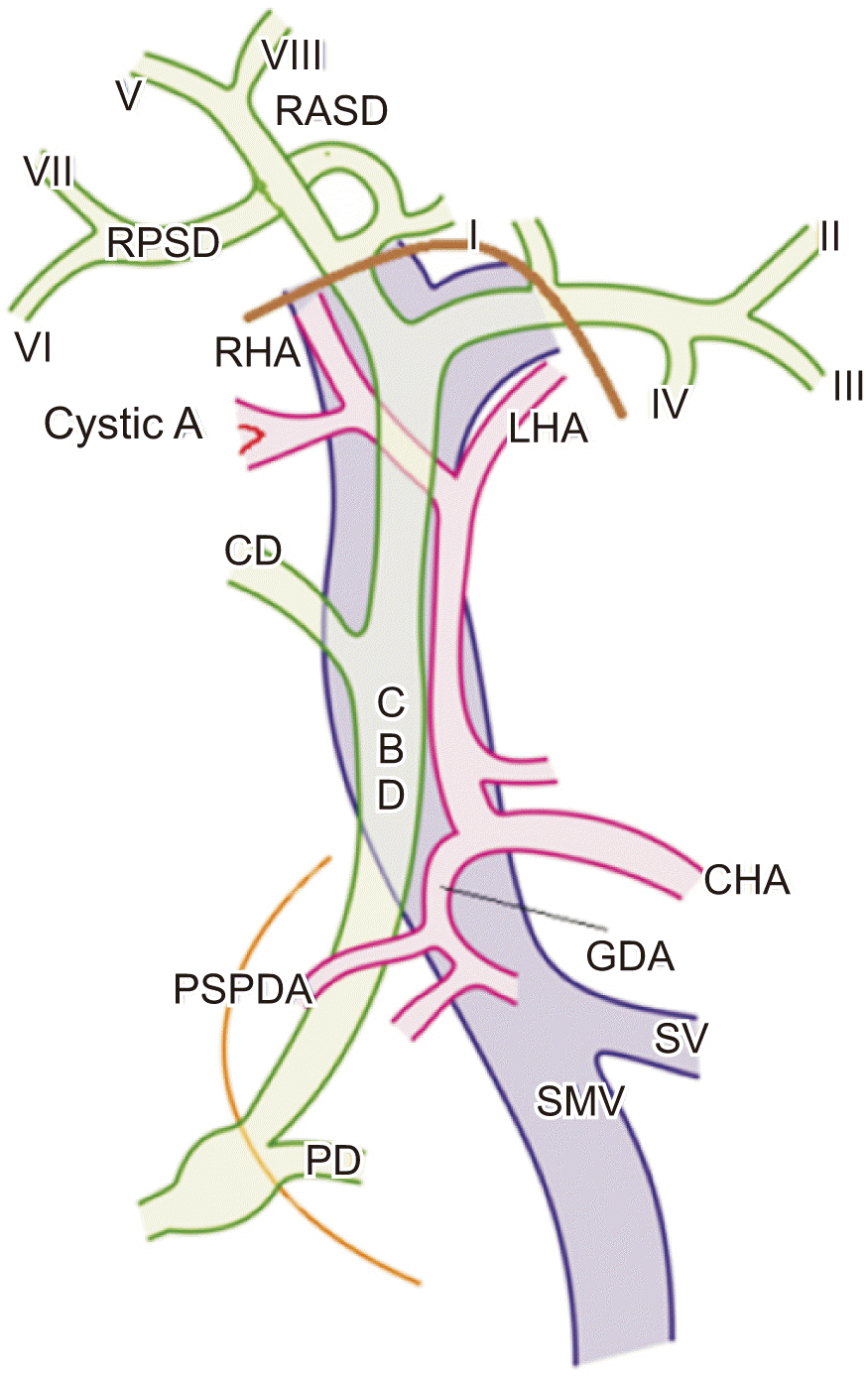
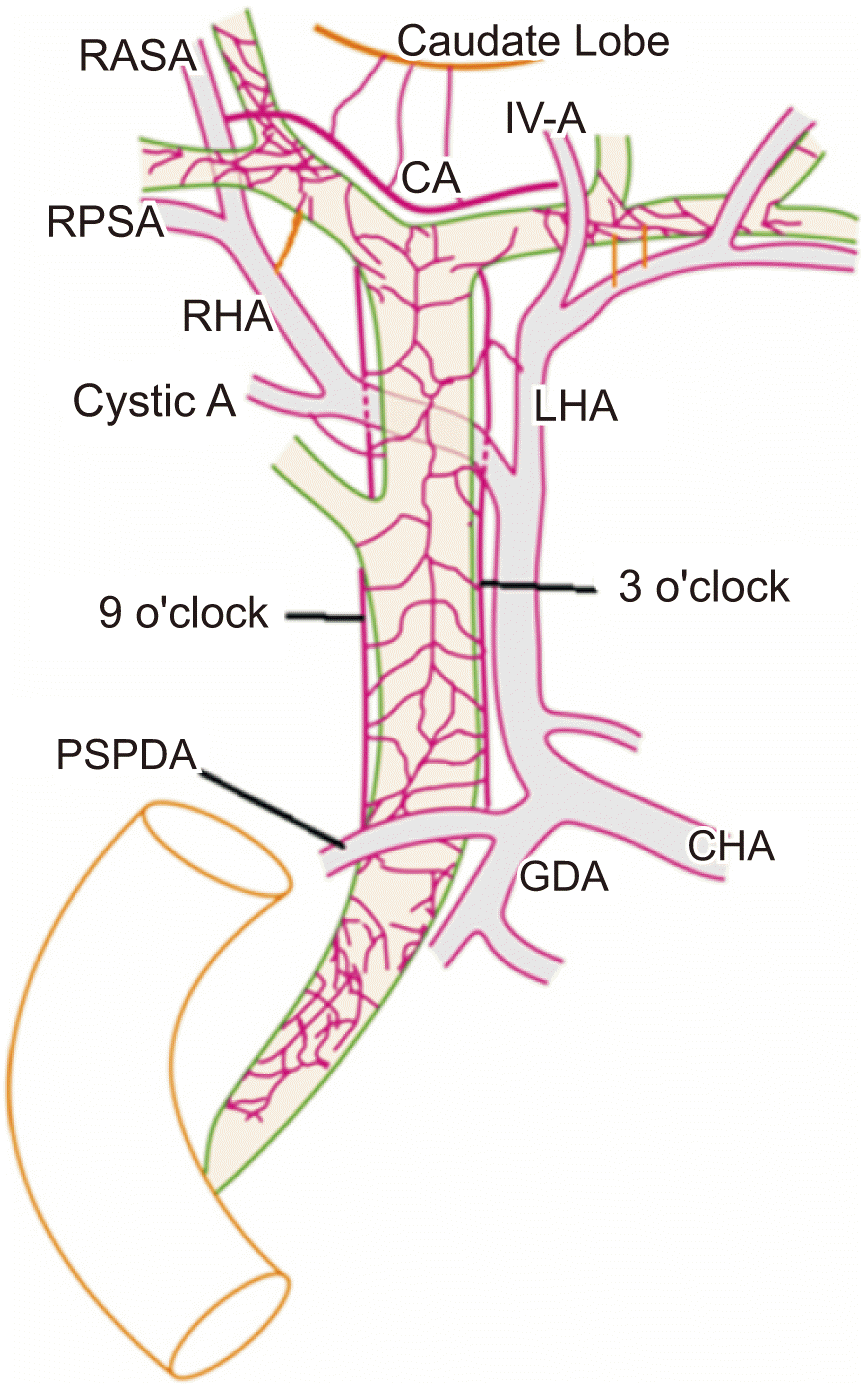
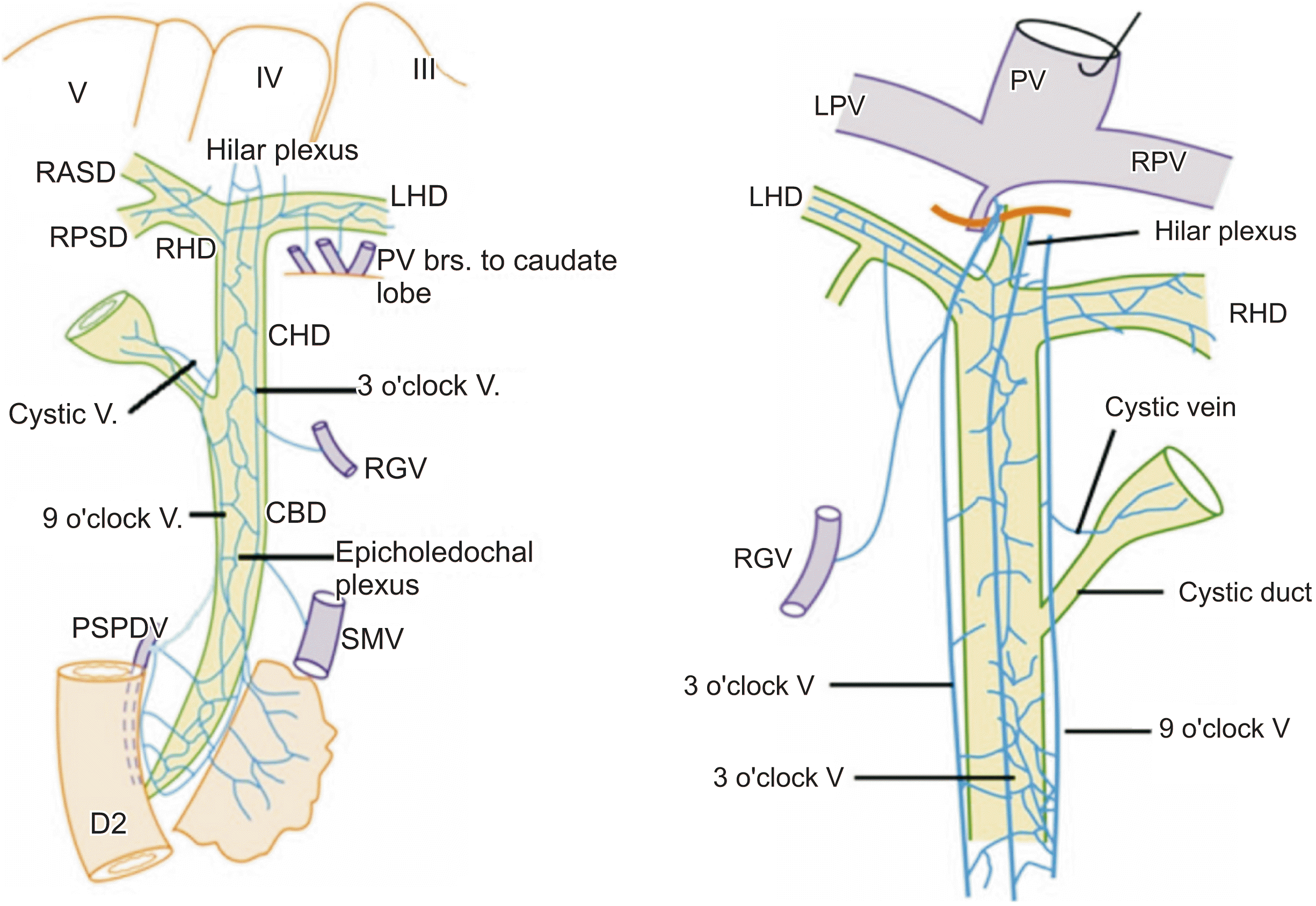
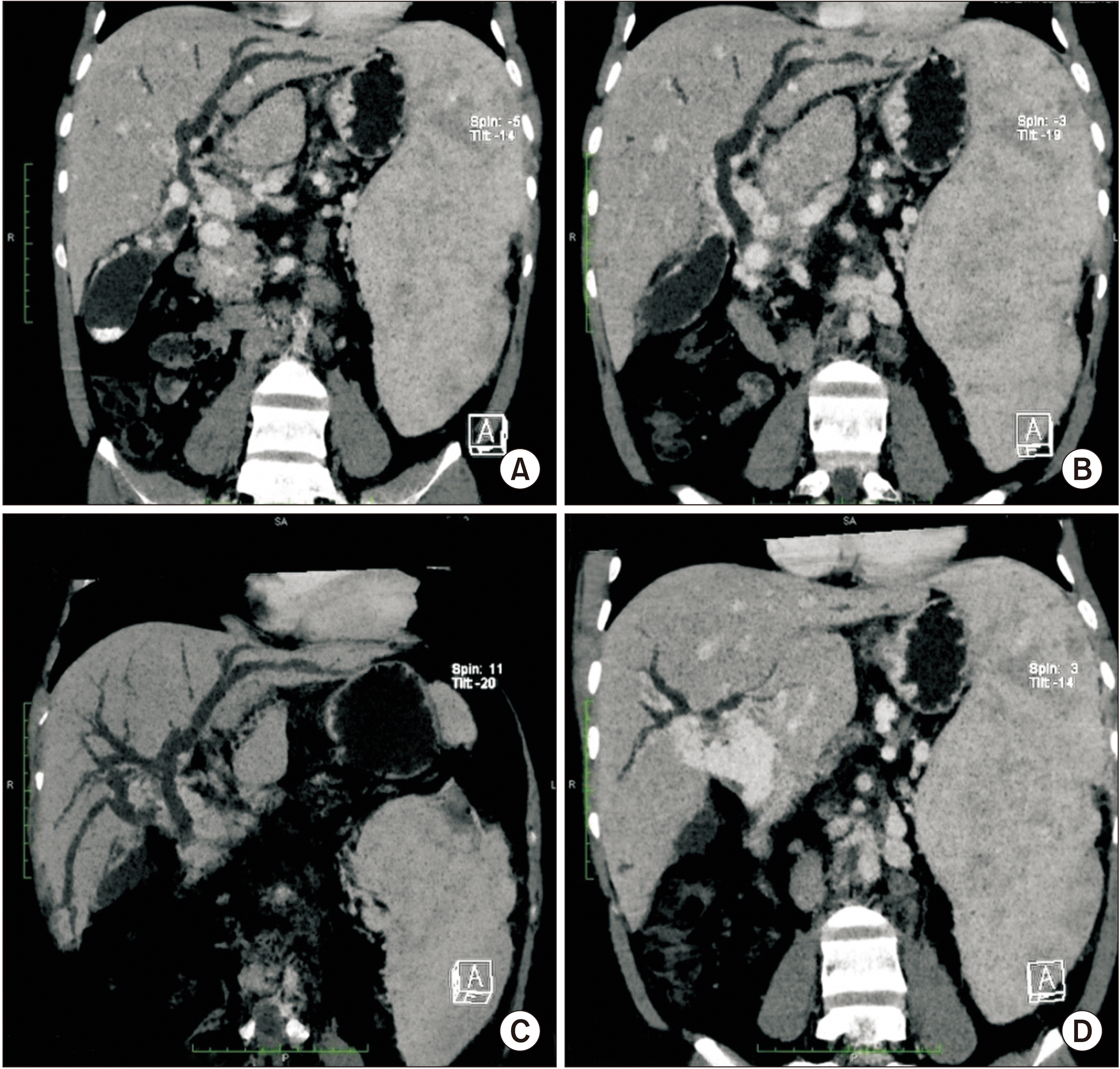
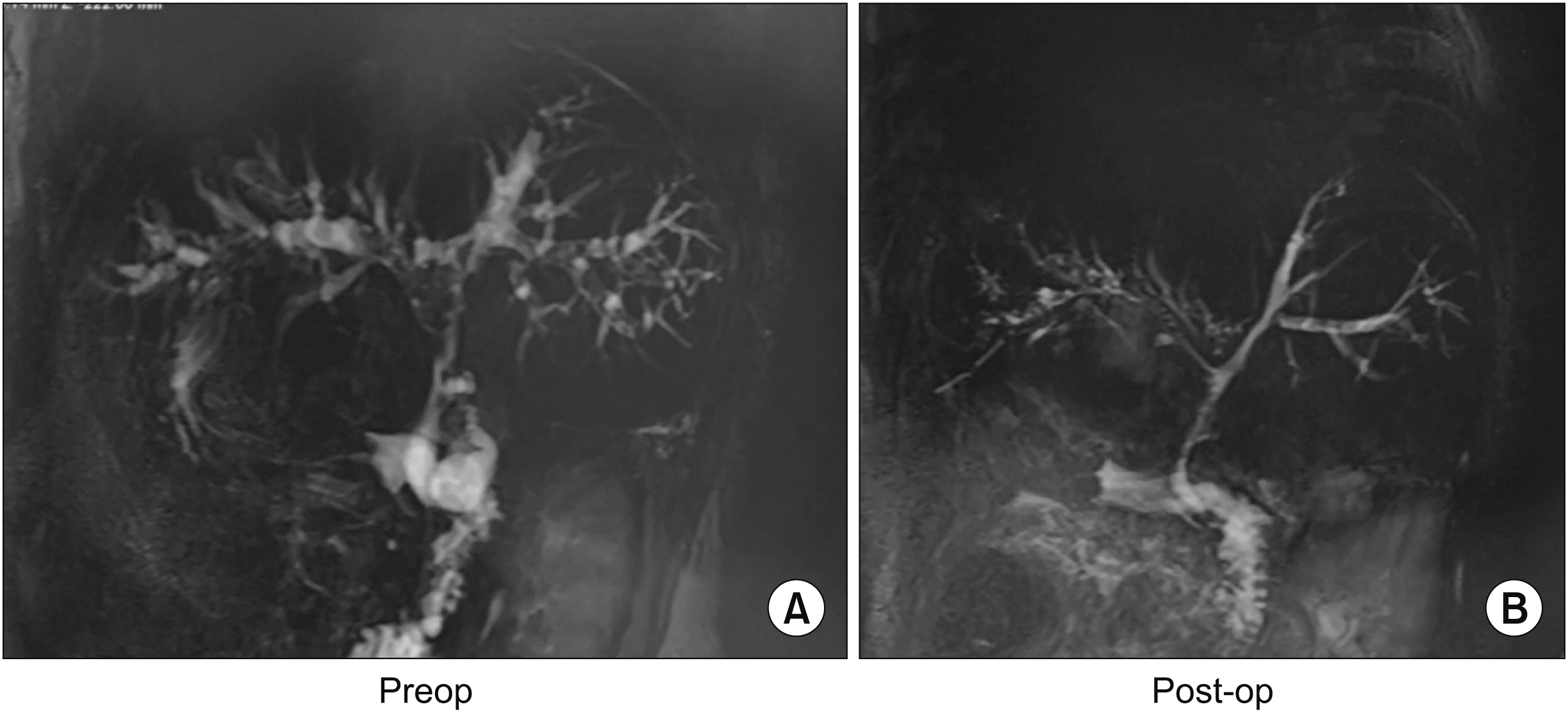




 PDF
PDF Citation
Citation Print
Print



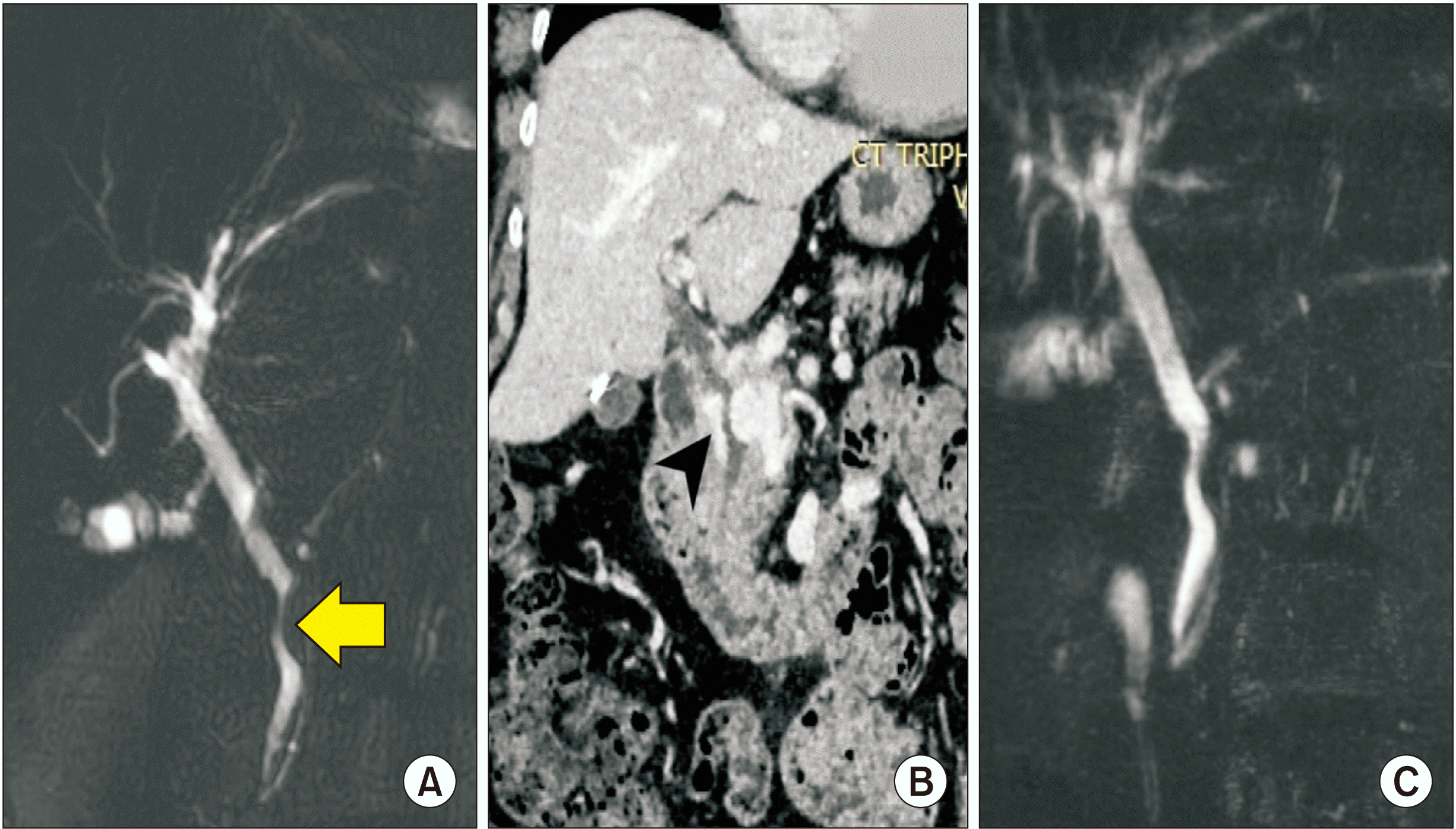

 XML Download
XML Download